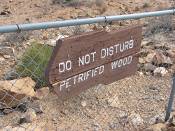The Hemlocks and Douglas firs.
What kind of species are you dealing with.
The key between the species will follow later.
Douglas fir Pseudotsuga_menzoiesii | Eastern_hemlockspar Tsuga_canadensis | Western_hemlockspar | Mountain hemlock
Both the Hemlock firs and the Douglas firs are large fir trees. They have soft needles with white lines. The needles are flat and not stinging or rigid. You can tell them apart best by the bark and the cones. Douglas fir is very common in Dutch forests, sometimes more common still than the Norway spruce. Hemlock firs are not often seen in forests, but nevertheless you see them here and there. Douglas fir are easily recognizable and so are Hemlocks. The different Hemlock species are quite impossible to keep apart. They are, however, terribly superb and timeless/almost fairy-like trees, especially if they stand alone.
- 1. Tree has typical rather small cones (about 5 cm), with little "snaketongue"-like things sticking out of it (the end of the tongues is split like a snake-tongue). The bark of larger trees has a very typical colour and structure. The bark seems to be bursted open and in the fissures a yellow/orange colour (gold-ish) is present: once you recognise this you can't miss it. Young trees have smooth bark with many resin-blisters. Crown frequently somewhat irregular. Needles not stiff and do not sit regular on the branches. Underside has white lines. Much planted in forest and trees naturally sow themselves, so young trees are common. One of the two most common fir-trees in the Netherlands --> Douglas fir
-
2.
Tree has flat non-stirdy needles. Bark is a bit rough, but if young only a bit scaly. Tiny cones, but very many. Under the tree on the soil there are always many of them.
Two species, with to 2 a 3 cm small cones. Not often in forests, more in gardens --> Hemlock fir. Either Eastern_hemlock or Tsuga_canadensis or Western_hemlock.
In the books one is given differences, but in practice it is as good as impossible to tell the Western and Oriental Hemlock species apart. Differences lie in the clarity of the white lines on the underside of the needles and if the needles are the most wide in the middle or toward the basis. I have once stared on two individual trees of either species and could not tell the difference. If you know a useful method: let me know.
Below a number of photographs of the two species. The yellow paper is always Eastern_hemlock or Tsuga_canadensis , the white paper Western_hemlock.
The Mountain_hemlock is a rarity and I won't discuss it further here.
If you want to see all species together you can visit Arboreta like Von Gimborn gardens near Utrecht . Or if you live to the north pinetum at Anloo near Groningen. The last one has really beautifull large Hemlocks.










Douglasfir Pseudotsuga_menzoiesii





All species photographed.
Douglasfir Pseudotsuga_menzoiesii | Eastern_hemlock Tsuga_canadensis | Western_Hemlock | Mountain_hemlock
Douglasfir Pseudotsuga_menzoiesii





Eastern_hemlock Tsuga_canadensis





















